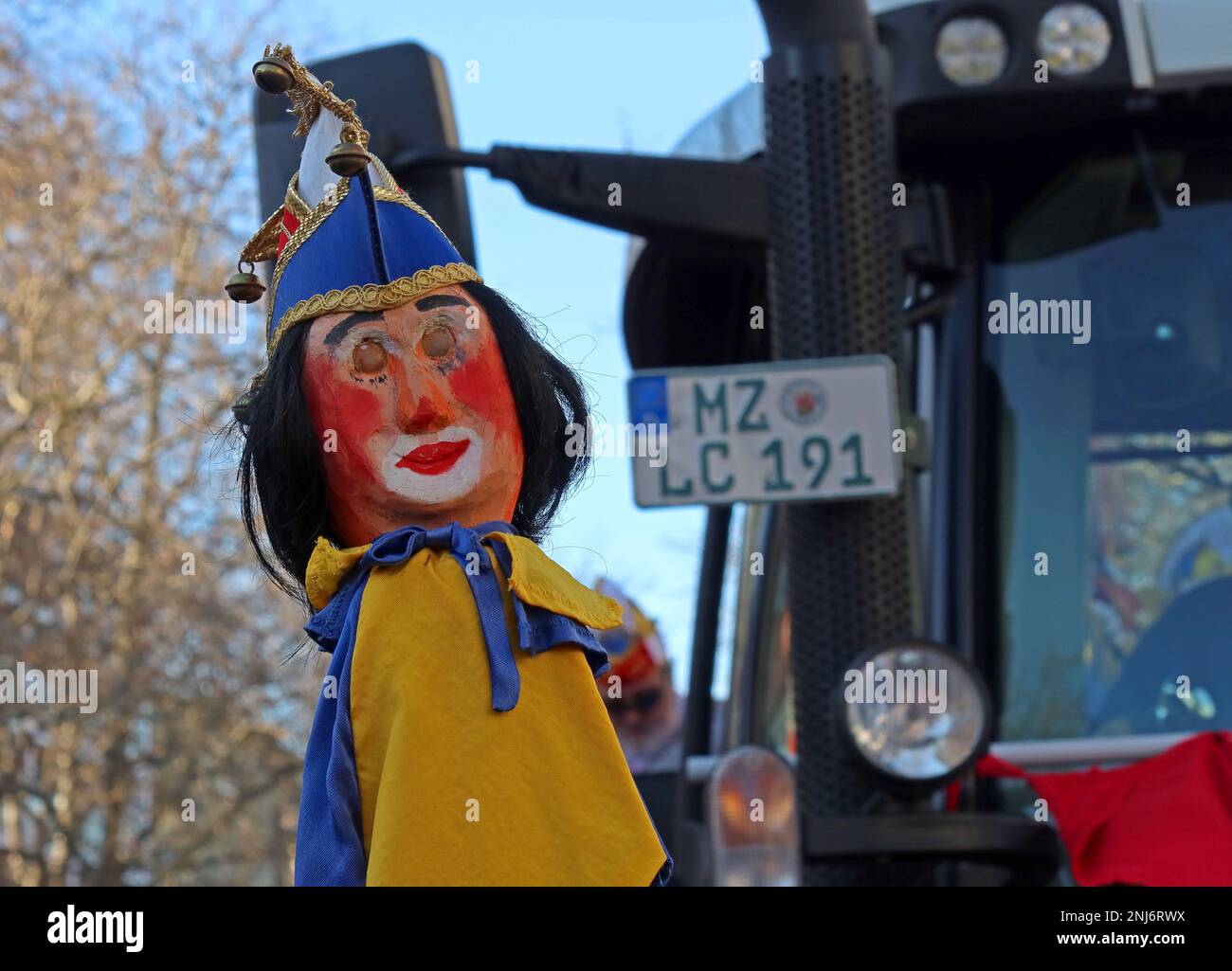Tractor with an MZ number plate,pulling a float, with a Fastnacht clown figure on the front of the vehicle, Mainz, Rhineland-Palatinate, Germany,55116

Image details
Contributor:
Tony Smith / Alamy Stock PhotoImage ID:
2NJ6RWXFile size:
46.5 MB (1.4 MB Compressed download)Releases:
Model - no | Property - noDo I need a release?Dimensions:
4752 x 3420 px | 40.2 x 29 cm | 15.8 x 11.4 inches | 300dpiDate taken:
20 February 2023Location:
Große Langgasse 10-12, Mainz, Germany, Mainz, Rhineland-Palatinate, Germany, 55116More information:
The Mainz Carnival (Mainzer Fastnacht, "Määnzer Fassenacht" or "Meenzer Fassenacht") is a months-long citywide carnival celebration in Mainz, Germany that traditionally begins on 11 November but culminates in the days before Ash Wednesday in the spring. It is one of the largest carnival events in Germany and, along with the Cologne and Düsseldorfer carnivals, Mainz is one of the three cities prominent in the rhenish carnival tradition. Aside from the celebrations, parades, and jollity which are typical of carnival traditions in many countries, the Mainz carnival has an unusual emphasis on political and literary humor and commentary. The tradition of carnival can be traced back to the Christian moveable feasts, where Ash Wednesday is the first day of Lent and occurs forty-six days (forty days not counting Sundays) before Easter. The first written records of the tradition date from the 13th and 14th century. By that time, regulations against excessive gluttony and debauchery during the days before carnival had been established. In the beginning, the Mainz carnival was non-political. The activities of the carnivalistic organizations (MCV, Ranzengarde, Rosenmontagszug, sessions) had been watched closely by the grand ducal authorities, but generally allowed to continue Traditionally, carnival season in Mainz begins on November 11 at 11:11, and continues through Ash Wednesday. However, the event peaks in February or March in the days leading up to Ash Wednesday. Political commentary and caricature have become a notable part of the Mainz carnival, and especially of its parades. For example, floats during one parade in the late 1980s showed Uncle Sam and a Russian soldier climbing out of suits of armor, and portrayed Soviet General Secretary Mikhail Gorbachev in a bathtub. The battle cry of the Mainz carnival, Helau, originates from Düsseldorf and was introduced in 1938 in Mainz